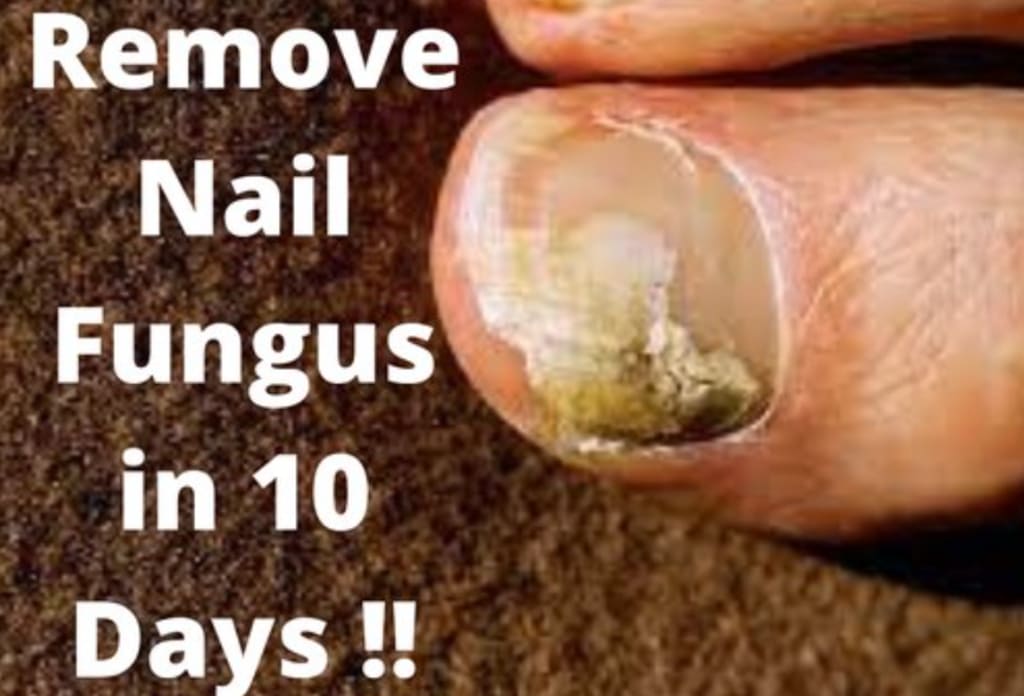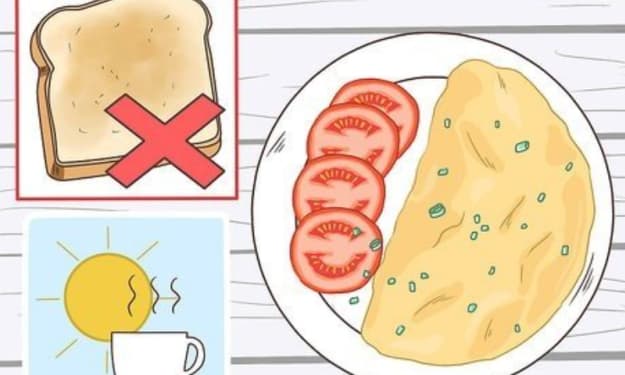How exactly did you cure your own toe nail fungus
Why is toenail fungus so hard to eliminate?

# How I Cured My Toenail Fungus: A Personal Journey to Healthy Nails
Toenail fungus—just the mention of it can make you cringe. For me, it was more than just a cringe-worthy topic; it was a stubborn, embarrassing problem that I had to deal with daily. My journey to healthy nails was a mix of trial and error, patience, and persistence. Here’s how I managed to cure my toenail fungus and what I learned along the way.
## Understanding the Enemy
Toenail fungus, or onychomycosis, is caused by various types of fungi, and it thrives in warm, moist environments. The infection can make your nails thick, discolored, and brittle, leading to discomfort and a reluctance to show your feet in public.
### Symptoms I Experienced:
- **Thickened nails:** My nails became thicker and more difficult to trim.
- **Discoloration:** A yellowish or brownish tint started to appear on the nail surface.
- **Brittle nails:** The nails began to crumble or split easily.
- **Unpleasant odor:** There was a slight, but noticeable, unpleasant smell.
## Step 1: Consult a Professional
The first step in my journey was to consult a healthcare professional. I visited a podiatrist who confirmed my condition. This was crucial as it ruled out other possible nail issues and provided a clear diagnosis.
### What My Podiatrist Recommended:
- **Topical antifungal treatments:** These can be applied directly to the nail and surrounding skin.
- **Oral antifungal medication:** Taken in pill form, these are effective but come with potential side effects.
- **Laser treatment:** A newer, more expensive option that uses light to destroy the fungus.
- **Nail removal:** In severe cases, removing the nail might be necessary.
## Step 2: Topical Treatments and Home Remedies
I decided to start with topical treatments and home remedies. Here’s a breakdown of what I tried and how effective each method was.
### Over-the-Counter Antifungal Creams:
I picked up a well-reviewed antifungal cream from the pharmacy. Applying it twice daily, I focused on getting it under the nail and around the edges.
**Effectiveness:** Moderate. It helped to some extent, but the progress was slow.
### Tea Tree Oil:
Tea tree oil is a natural antifungal and antibacterial agent. I used a cotton swab to apply diluted tea tree oil directly to my nails once daily.
**Effectiveness:** Noticeable improvement. My nails looked less discolored, and the thickness reduced slightly over time.
### Vicks VapoRub:
This might sound unusual, but Vicks VapoRub contains camphor and eucalyptus oil, both of which have antifungal properties. I rubbed a small amount on the affected nails every night before bed.
**Effectiveness:** Surprising. My nails showed significant improvement in both appearance and thickness after a few weeks.
## Step 3: Oral Antifungal Medication
After several months of using topical treatments and seeing some, but not complete, improvement, I decided to try oral antifungal medication as suggested by my podiatrist.
### Prescription Oral Antifungal Pills:
I was prescribed terbinafine, a common oral antifungal medication. I took it once daily for three months.
**Effectiveness:** Highly effective. Within a few weeks, new, healthy nail growth was noticeable. The complete regrowth of my nails took around six to nine months.
### Side Effects:
Oral antifungal medications can have side effects, including liver issues. Thankfully, I didn’t experience any severe side effects, but it’s crucial to have regular blood tests to monitor liver function during the treatment.
## Step 4: Laser Treatment
For the stubborn parts of the infection that persisted despite oral medication and topical treatments, I opted for laser treatment. This involved a few sessions where a laser was used to target and destroy the fungus.
**Effectiveness:** Excellent. The laser treatment eradicated the remaining traces of the fungus, leading to the complete recovery of my nails.
## Step 5: Preventing Recurrence
Once the fungus was gone, I focused on preventing it from coming back. Here’s how I keep my nails healthy:
### Good Foot Hygiene:
- **Keep feet dry:** Moisture is a breeding ground for fungus. I dry my feet thoroughly after bathing and wear moisture-wicking socks.
- **Regular trimming:** Keeping nails short and clean helps prevent fungal growth.
- **Use antifungal powder:** I sprinkle antifungal powder in my shoes to keep them dry and free of fungus.
### Proper Footwear:
- **Breathable shoes:** I wear shoes made of breathable materials to reduce moisture buildup.
- **Alternate shoes:** Giving shoes time to air out between wears helps keep them dry and fungus-free.
### Regular Checkups:
I make it a point to check my nails regularly for any signs of recurrence and visit my podiatrist if I notice anything unusual.
## Final Thoughts
Dealing with toenail fungus was a challenging experience, but it taught me the value of patience and persistence. There’s no one-size-fits-all cure; what worked for me was a combination of methods tailored to my situation. If you’re battling toenail fungus, don’t get discouraged. Consult a professional, be diligent with your treatment, and take preventive measures. Healthy nails are within reach!
# Why is Toenail Fungus So Hard to Eliminate? Unpacking the Mystery of Persistent Infections
If you’ve ever dealt with toenail fungus, you know it’s more than just a cosmetic nuisance. It’s a stubborn, persistent problem that often seems impervious to treatment. But why is it so hard to get rid of? In this blog post, we’ll explore the underlying reasons why toenail fungus is such a tough adversary and discuss strategies to combat it effectively.
## The Stubborn Nature of Toenail Fungus
Toenail fungus, medically known as onychomycosis, is caused by various types of fungi, including dermatophytes, yeasts, and molds. These microscopic invaders thrive in warm, moist environments—making your shoes the perfect breeding ground. Here’s why toenail fungus is notoriously difficult to eliminate:
### 1. Fungal Fortresses: The Structure of Nails
Nails are composed of a tough protein called keratin, which serves as a protective barrier. This structure, while great for shielding our toes, also creates a perfect hideout for fungi.
- **Dense Layers:** The multiple layers of keratin make it hard for treatments to penetrate deeply enough to reach the fungi nestled within.
- **Nail Bed Refuge:** Fungi often reside under the nail and in the nail bed, areas that are particularly challenging for topical treatments to access effectively.
### 2. Slow Growth and Healing
Nails grow slowly—on average, toenails grow about 1.5 millimeters per month. This slow growth rate means that any damaged or infected nail can take months, sometimes up to a year, to fully regrow and replace the infected nail.
- **Delayed Results:** Treatments need time to work through the slow regrowth process, making it a long-term battle.
- **Persistent Infection:** Even after starting treatment, it can be difficult to see immediate improvement, which can be discouraging.
### 3. The Resilient Fungi
Fungi are tenacious and adaptable organisms. They can survive in various environments and are adept at evading treatments.
- **Biofilm Formation:** Some fungi form biofilms, which are protective layers that shield them from antifungal agents, making it harder for treatments to be effective.
- **Dormant Spores:** Fungi can produce spores that can remain dormant for extended periods, only to reactivate and cause re-infection once conditions are favorable.
### 4. Limited Efficacy of Treatments
Many over-the-counter and even prescription treatments are not always effective in eradicating toenail fungus completely.
- **Topical Treatments:** These often struggle to penetrate the nail deeply enough to reach the root of the infection, especially in advanced cases.
- **Oral Medications:** While more effective, oral antifungal drugs can take months to work and may have side effects that make long-term use problematic.
### 5. Environmental and Behavioral Factors
Our daily habits and environments often contribute to the persistence of toenail fungus.
- **Moist Environments:** Wearing tight or non-breathable shoes creates a moist environment conducive to fungal growth.
- **Public Spaces:** Frequenting places like gyms, pools, and communal showers increases the risk of exposure to fungal spores.
- **Inadequate Hygiene:** Failing to keep feet dry and clean, or not changing socks regularly, can promote fungal infections.
## Strategies for Fighting Back
While toenail fungus is hard to eliminate, it’s not invincible. Here are some strategies that can help in the battle against it:
### 1. Combination Treatments
Using a combination of treatments can be more effective than relying on a single method.
- **Topical and Oral Medications:** Combining topical treatments with oral antifungal drugs can provide a one-two punch against the fungus.
- **Adjunctive Therapies:** Newer treatments like laser therapy can be used alongside traditional methods to improve outcomes.
### 2. Persistence and Patience
Treating toenail fungus requires consistent application and patience. Stopping treatment prematurely can allow the fungus to resurge.
- **Follow Through:** Even if the nail looks better, continue treatment as directed by your healthcare provider to ensure all the fungus is eradicated.
- **Regular Monitoring:** Keep an eye on your nails and be vigilant for any signs of recurrence.
### 3. Preventive Measures
Preventing reinfection is crucial to maintaining healthy nails post-treatment.
- **Proper Footwear:** Wear breathable shoes and moisture-wicking socks to keep feet dry.
- **Hygiene Practices:** Regularly wash and dry your feet thoroughly. Use antifungal powders or sprays if needed.
- **Public Precautions:** Use protective footwear in communal showers and pool areas to reduce the risk of exposure.
### 4. Seeking Professional Help
Consulting a healthcare professional is essential, especially if over-the-counter treatments aren’t working.
- **Diagnosis:** A professional can accurately diagnose the type of fungal infection and recommend the most effective treatment plan.
- **Advanced Treatments:** They can provide access to stronger prescription medications or alternative treatments like laser therapy.Keravita Pro Review
## Conclusion
Toenail fungus is a tough adversary, but understanding why it’s so persistent helps in crafting a more effective approach to treatment. Combining patience, proper treatment methods, and preventive measures can lead to healthier, fungus-free nails. If you’re struggling with toenail fungus, don’t get discouraged. With the right strategy and support, you can win the battle and reclaim your healthy nails.
About the Creator
peter
Content about cars, motorbikes, technology, news
Enjoyed the story? Support the Creator.
Subscribe for free to receive all their stories in your feed. You could also pledge your support or give them a one-off tip, letting them know you appreciate their work.






Comments
There are no comments for this story
Be the first to respond and start the conversation.